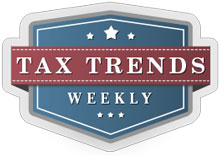3 Common Debt Relief Options to Protect You from Tax Stress
Guest post by: Trenton Fortes
Considering the economic struggle that most people are currently experiencing, one of the most common statements that you may get to hear from most of the people is that “I owe the IRS back taxes.” If you think that you can evade without paying back the owed amount to the IRS, then you’re actually wrong. Well, the IRS can easily track you and can garnish your wage to retrieve the owed amount. So, if you want to avoid wage garnishment and pay off the owed amount to the IRS, you can take tax debt relief help. This can help you eliminate your financial owes as well as regain control over your situation without wage garnishment or levying bank account. If you’re unaware of the debt relief options available for the indebted taxpayers, then you can get information on the three common debt relief options available to the people.
Here are the three common debt relief options that you can consider that can be beneficial for you:
What is installment agreement?
Installment agreement is one of the feasible options for the taxpayers for paying off your taxes. This is considered to be the best option for various reasons like the taxpayer can easily get out of the debt rut by making a monthly payment. If the taxpayer offers installment agreement to the IRS, then it can help to solve the issue with ease. The number of collection calls can be reduced if you offer an installment agreement with the help of the tax debt relief program after it finds your willingness to pay off the debt.
Installment agreement is an excellent option as you can make minimum installment payment and you’re not required to dig on your savings to pay off your owed taxes.
There are both advantages as well as disadvantages of installment agreement that you need to be aware of, before you choose this debt relief option. One of the important advantages of the installment agreement is to prevent the IRS from further collection activities and this debt relief option is flexible for the indebted taxpayers. However, one of the drawbacks that you need to know is that the interest get accrued on the principal balance to make the owed amount affordable to pay off. You’re required to pay back the principal balance or else you default.
Are you aware of the Offer in Compromise (OIC)?
An OIC is similar to debt settlement because you pay less than you actually owe to the IRS. Well, it is considered to be a legitimate option when you’re undergoing financial hardship. But the IRS may review the financial situation of the debtor before approving the offer. Make sure you offer an amount that you estimate that the IRS may expect to collect within a reasonable period of time.
This debt relief option has certain advantages as well as disadvantages like the owed amount of the taxpayer is reduced through settlement option and it helps to lower the number of collection calls. But the drawback of this OIC is that you’re to make high initial payment.
Do you know about Currently Not Collectible (CNC) option?
In some of the cases, you may not be able to qualify for an OIC or Installment Agreement. Under such a circumstance, you can take help of a tax professional to apply for Currently Not Collectible (CNC) status. This debt relief option can be beneficial for you if you’ve low cash flow but own valuable assets. But you need to know that CNC depends on your monthly cash flow. Under this CNC status, the statute of limitations continue to run and the IRS may suspend the collection activities for a limited period. The IRS may review your financial state and once the situation improves, it may revoke the CNC status. After that, the IRS may resume the collection efforts.
Therefore, you’re required to keep the three tax debt relief option to eliminate your tax debt. Make sure you avoid evading your tax debt problem by consulting a tax profession. He can guide you to come out of the tax problem withe ease.

